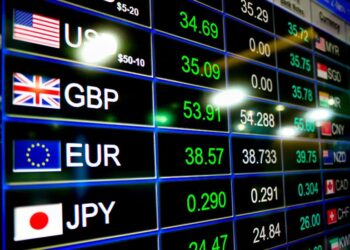Let’s face it, we are all attracted by growth. It’s simply a part of human greed.
But with growth comes increased risk and volatility. Sometimes we need to take a step back and see things using a quality lens as opposed to just looking at growth for growth’s sake.
Take China for example; most people have participated in the Chinese equities market through funds such as ours for growth over the longer term.
This thesis hasn’t changed now but compared to 13 years ago when we first started, many companies we invested in weren’t blue chips, but now many are the same size or even larger than their western counterparts.
So as part of this transition, the earnings of these companies have also normalised which naturally makes investors more comfortable with the sector and subsequent allocation.
At the same time, the quality of earnings across all sectors have been more balanced out since H2 2017 which also increases conviction in the overall market (especially with offshore investors).
There are five reasons which we believe have been key to the increase in the quality of earnings:
-
Corporates have bigger pricing power driven by market consolidation
As with any emerging market, the number of players in any given industry starts very high, and over time due to M&A activity combined with some companies being more successful in attaining scale than others, market consolidation happens – think of it as the survival of the fittest theory.
Some of the key sectors we’ve been focusing on in terms of market consolidation are shown in chart one.
Chart 1: Sectors of focus regarding market consolidation
Take real estate, which has probably had the most M&A activity over recent years: With the top five players representing 17 per cent of the market this might seem low today, but the top 10 players 10 years ago were less than eight per cent of the total market.
Note that China has over 30,000 property developers of all shapes and sizes. Over time, smaller developers who only have one land site to develop have been struggling to obtain bank financing and had to succumb to takeovers from the larger players.
One of the positive consequences of consolidation from the corporate perspective is the ability to drive pricing power.
One example is the air conditioner industry. Over 2017, copper – being one of the key inputs into air conditioners – jumped 28 per cent in price. The three air conditioning giants Gree, Midea and Haier had two choices: Either cop a reduction in gross margin or increase the selling price of their air conditioners to maintain their margin.
The risk is, of course, that consumers won’t be willing to pay a higher price, but due to the strength of these three brands, consumers have proven to be less price sensitive. Because the disposable income of the Chinese consumer has increased, this has allowed them to keep being able to afford top quality branded goods and all three companies managed to maintain their gross margins.
-
Supply Side Reform
We have all read plenty of articles about the build-up of commodity inventories in China, even though GDP growth has been slowing down.
Note that the inventory build-up has been driven by state-owned enterprises (SOEs) being forced to generate steel to keep GDP up. This was clearly not sustainable, especially as margins were next to nothing!
The government then in 2016 started cutting supply of major commodities that led to increased margins by manufacturers, which stabilised the demand versus supply profile in the country and ensured the viability of many of these businesses, resulting in better quality earnings.
-
Increase in Productivity
China is now only second to the US with regards to total country research and development (R&D) spending, doubling Germany’s level in USD terms.
How does this within itself have anything to do with corporate profits?
Because of increased R&D spending, each unit of labour deployed into the Chinese economy is generating higher levels of GDP (aka growth in GDP per capita).
This is because China’s manufacturers are moving up the value chain and producing higher quality goods matched with higher margins. These inputs are going into most household consumables we use today.
Global market share of many of these inputs have increased dramatically and this is no small feat. This has taken years of investment as well as dedication to quality and branding.
-
Internet/E Commerce Company significance to market
Just like the “FAANG” stocks in the US, the Chinese have their own called “BAT” made up of Baidu (Chinese Google), Alibaba (Chinese Amazon) and Tencent (Chinese Facebook, Twitter and Paypal combined).
One of the key characteristics of the Chinese government that investors should be both impressed with as well as not taking for granted is their ability to protect domestic players from foreign competition.
Uber was a high-profile example and casualty. We here in the western world would link our Visa, Mastercard or AMEX to our Uber Account. In China though, people use the Wechats payment system (think Paypal).
Given Uber weren’t able to use this, no matter how many drivers they successfully recruited through incentives, there simply weren’t enough jobs due to the “default” payment system used in China. Uber ended up retreating and has since left the China market.
Over time, as these IT giants have grown and flourished in China (and abroad in most cases), their weight within the benchmark indices have been growing. In 2008, information technology and internet stocks made up 2.9 per cent and 0.7 per cent of the benchmark respectively.
Today, they represent 40.1 per cent and 38.8 per cent weights respectively, which leads to their significance in the broader market and an underlying driver of index returns. Due to their significant weight and earnings per share (EPS) growth trajectory, this leads us to believe that the broader market will perform well going forward.
-
Political Stability by President Xi
This has been an area of concern in recent times. President Xi’s ability to extend his presidential term indefinitely has drawn some media commentary comparing Xi to the likes of Kim Jong Un or Vladimir Putin.
What is missing is that both North Korea and Russia have track records of suppressing the broader public’s growth ambitions. One being strictly communist and the other a dictatorship (I’ll let you decide which one applies to who).
In China’s case, it is capitalist first, demonstrated by companies starting out in the late 1980s to early 1990s which grew at an exponential rate due to a lack of regulation.
With President Xi further re-iterating the “market’s” importance with regards to the direction of capital, we believe the stability of the Chinese government bodes well for investors in the long term.
Chart 2: MSCI China performance during President Xi’s term
Source: MSCI, CICC, April 2018
News will continue to flow out of China which discusses its risks (and these will come and go), but ultimately like all markets around the world, earnings growth and stability dictate long-term equity market prices.
China is well on the path to stable and diversified earnings growth and those who notice and understand this will be better informed and better able to diversify their investment portfolios.
Jonathan Wu is the executive director and chief investment specialist of Premium China Funds Management.





